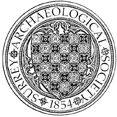Abbey Meads, Chertsey
Excavation by R J Poulton for SCC, Runnymede BC and HBMC on the site of the ovens known from previous excavations, to test the possibility of public display. The ovens were located , more of the ?precinct wall, previously found , was discovered and the Saxo-Norman levels were again located.


